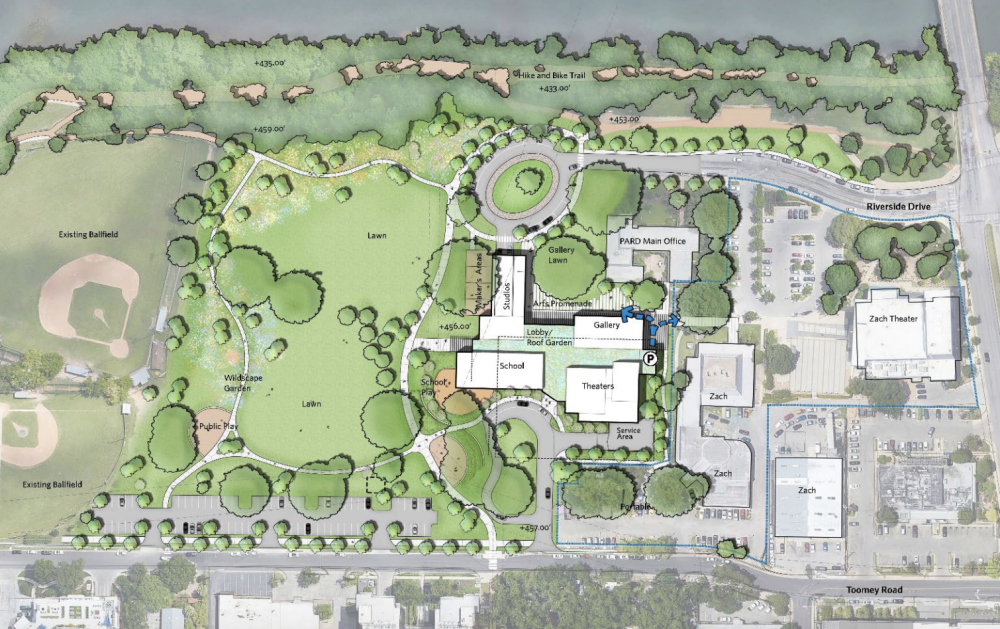“This project was allowed to escalate beyond our means. And hence, we’ve been at a facility that’s substandard and we haven’t been able to get going," interim City Manager Jesús Garza said March 19.
The big picture
Improvements to the cultural center have been under review since at least the 2000s due to deteriorating conditions there.
The facility, now located at 1110 Barton Springs Road, sits on an old landfill site and floodplain. A 2010 assessment labeled the building as “beyond repair,” former Mayor Steve Adler said it was “literally falling apart" back in 2019, and the city has documented recurring maintenance issues and upkeep costs in recent years.
Austinites have already voted to set aside millions of dollars for the Dougherty center's redevelopment, including nearly $4 million of the city's 2012 bonds and $25 million from the 2018 bond program.
That funding was meant to support a plan, backed by City Council, to build a brand-new, expanded arts center at Butler Shores nearby. However, that work has been further delayed, and the new center will likely end up looking different than what was originally envisioned for that parkland site.
What's happening
As recently as 2022, planning and design work for the facility was underway with an anticipated opening date in late 2024. New theaters, studios, educational spaces, offices, parks and play areas, and other public features were included.
But after more years without reaching groundbreaking, officials are now looking to scrap those recent concepts and revamp the project in the face of significant cost increases.
Over the last rounds of formal project planning, the original bond-backed $28.5 million outline ballooned by an extra $30.65 million, according to the Parks and Recreation Department.
The largest piece of the estimated 107% increase was a proposed $15 million underground parking structure, now in line to be cut from the reworked development. City staff also estimated that the project's delay through a period that saw rising inflation and construction expenses may have cost thousands of dollars more per day, adding up to several million dollars overall.
The approach
In late 2022, council asked to launch the Dougherty redevelopment—without any reductions—with the expectation that cost differences could be covered under a potential 2024 bond. Given Austin's large amount of still-unissued debt from previous bonds, however, city leaders no longer plan to ask voters to fund additional parks or cultural investments this year.

"We’d have to wait for the 2026 bond, and we’re not sure if voters will vote for that bond—I hope that they would, parks are important, I think that we have had a lot of support. But I can’t count on something that’s an unknown," she said.
With those constraints in mind, the parks department is instead now looking to relaunch a community engagement process to shape a redesigned facility before moving that plan through civic reviews and into development. That new round of activity would be based around a project within the limits of past bond funding only.
“The goal is to bring forward something that’s usable so the community can immediately move programming from the Dougherty Arts Center, at least a portion of it, over into this new facility and be in a safe and welcoming location," McNeeley said.
The new center may not include all of the features that were formerly anticipated for the project, but McNeeley said it could be designed with room for future expansion phases.





